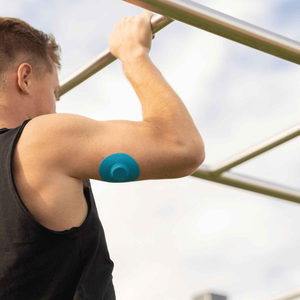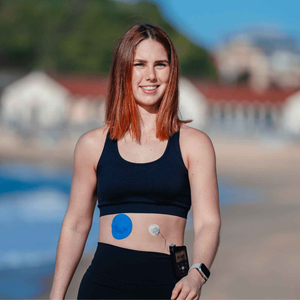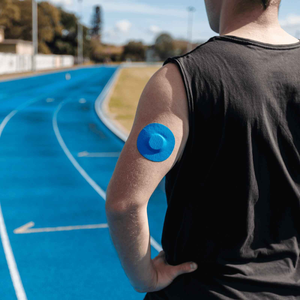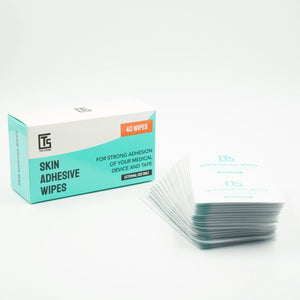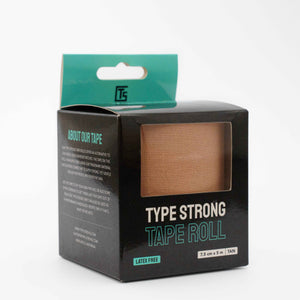In the dynamic landscape of diabetes management, continuous glucose monitoring (CGM) systems have emerged as revolutionary tools, providing individuals with real-time insights into their blood glucose levels. Abbott's Freestyle Libre series, with its flagship devices, Freestyle Libre 2 and Freestyle Libre 14 Day, stands at the forefront of this innovation. In this article, we will explore the striking similarities and nuanced differences between these two devices, taking into account the diverse needs of individuals across different age groups.
Similarities:
Design
Both the Freestyle Libre 2 and Freestyle Libre 14 Day share a common foundation in their design. Worn discreetly to the upper arm, these sensors provide a user-friendly and unobtrusive solution for monitoring glucose levels. This design consideration caters to the need for comfort and minimal intrusion across all age groups.
No Fingerstick Calibration
A significant leap forward in diabetes technology is the elimination of routine fingerstick calibrations. Both devices offer this feature, relieving users of the inconvenience associated with traditional monitoring systems. This is particularly advantageous for children who may find regular fingerstick tests challenging and for older adults seeking a more streamlined approach to monitoring.
Wireless Data Transmission
Embracing the convenience of modern technology, Freestyle Libre 2 and Freestyle Libre 14 Day use wireless transmission to relay glucose data to compatible devices. This feature ensures that users of all age groups can access real-time information seamlessly, promoting a proactive approach to diabetes management.
Customisable Alarms
The ability to set customisable alarms for low and high glucose levels is a shared attribute. Whether it's parents of young children, working professionals, or seniors, this feature empowers users to tailor their monitoring experience based on their unique needs and preferences, fostering a proactive approach to diabetes care.
Differences:
Bluetooth Connectivity (Freestyle Libre 2)
Freestyle Libre 2 introduces Bluetooth connectivity, allowing users to receive real-time glucose readings on their smartphones through the LibreLink app. This connectivity feature aligns with the preferences of tech-savvy teenagers and adults who seek a more integrated and digitally connected approach to diabetes management.
Optional Real-Time Alarms (Freestyle Libre 2)
Setting itself apart, Freestyle Libre 2 introduces optional real-time alarms for low and high glucose levels. This level of customisation caters to the diverse preferences of different age groups. Parents may find peace of mind with alarms for their children, while young adults can enjoy the flexibility to set their own thresholds, empowering them in their diabetes management journey.
Extended Wear Duration (Freestyle Libre 14 Day)
Freestyle Libre 14 Day and Freestyle Libre 2 both offer an extended wear duration of 14 days, providing users with the convenience of a longer sensor life. This extended duration can be particularly appealing to older adults, minimising the frequency of sensor replacements and simplifying maintenance, aligning with their preferences for fewer interventions.
FDA Approval and Availability
The timing of FDA approval and market availability may influence the choices available to different age groups. Individuals who have been using Freestyle Libre 14 Day for a longer duration may have established preferences based on their familiarity with the device.
Accuracy
The Freestyle Libre 2 sensor is more accurate than the Freestyle Libre 14-day sensor. For adults and pediatric patients, Libre 2's mean absolute relative difference (MARD) is 9.2% and 9.7%, respectively. By comparison, the MARD of the FreeStyle Libre 14 Day sensor is 12%. A higher MARD indicates more significant differences between the CGM and reference glucose values, whereas a smaller percentage indicates tighter alignment between the CGM readings and reference glucose levels.
Distinct Considerations for Different Age Groups:
Children and Adolescents:
For the younger demographic, considerations such as ease of use, comfort, and engaging features are paramount. Freestyle Libre 2's Bluetooth connectivity aligns seamlessly with the digital preferences of children and teenagers, integrating glucose monitoring into their tech-oriented lifestyles.
Working Adults:
The optional real-time alarms in Freestyle Libre 2 present a significant advantage for working professionals. The ability to customise alerts based on daily routines and work schedules enhances the adaptability of the device, supporting effective diabetes management amidst a busy lifestyle.
Seniors:
Older adults may appreciate the extended wear duration of Freestyle Libre 14 Day & Libre 2, minimising the frequency of sensor replacements. The established availability and familiarity with this device may influence their preference for continuity in their diabetes management routine.
Conclusion
In conclusion, the Freestyle Libre 2 and Freestyle Libre 14 Day offer tailored solutions for individuals across different age groups, enhancing the management of diabetes with advanced features and user-centric designs.
To maximise your experience with the transformative benefits of Freestyle Libre 2 and Freestyle Libre 14 Day consider using our purpose-built FreeStyle Libre patches, seize the opportunity to take control of your diabetes journey. Embrace the freedom of wireless connectivity, customisable alarms, and extended wear duration, ensuring a seamless and empowering experience in managing your glucose levels.
